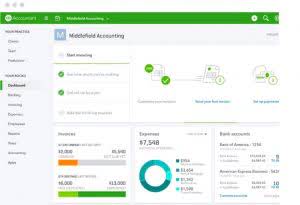Content

Having eight steps in the overall accounting cycle may seem pretty straightforward, but it also means there are eight chances for your process to go awry. Locating and solving problems early will help carry out your process with more ease and efficiency. You can set up proper procedures for each step and create checks and balances to catch unwanted errors. The final step before you create your financial statements is making adjustments to account for any corrections for accruals or deferrals.
- The three major types of financial statements – or accounting reports – are the balance sheet, income statement and cash flow statement.
- A trial balance tells the company its unadjusted balances in each account.
- To help you in your growth journey, TallyPrime enables you to manage multiple companies and incrementally add features such as multiple go-downs, multi-currency, order process, cost centres etc.
- All accounts are divided into five categories in order to record business transactions.
- Each step in the accounting cycle is equally important, but if the first step is done incorrectly, it throws off all subsequent steps.
Tax authorities, employees and other parties interested in understanding your business’s financial position will review the information in your financial statement. As you get closer to the end of the accounting period, you’ll need to add adjusting entries – or end-of-period adjustments – to your journal. These entries ensure your accounts reflect the correct expenses and revenues for the accounting period. In the first step of the accounting cycle, you’ll gather records of your business transactions—receipts, invoices, bank statements, things like that—for the current accounting period. These records are raw financial information that needs to be entered into your accounting system to be translated into something useful.
Spend more time growing your business
Thus, accounting plays a critical role not only in operating a business but also in meeting statutory compliance and developing future financial projections. When you’re deciding whether to use a monthly, quarterly, or annual accounting cycle, a good rule of thumb is to consider your financial deadlines. Business owners often select an annual accounting period to align with the U.S. In accounting, the transaction types are cash, noncash and credit events. You can identify transactions through invoices, receipts and other documents that record activity within your business. When transitioning over to the next accounting period, it’s time to close the books.
A worksheet is created and used to ensure that debits and credits are equal. Companies will have many transactions throughout the accounting cycle. The eight-step accounting cycle is important to know for all types of bookkeepers. It breaks down the entire process of a bookkeeper’s responsibilities into eight basic steps. Many of these steps are often automated through accounting software and technology programs. However, knowing and using the steps manually can be essential for small business accountants working on the books with minimal technical support.
Go from closing in days to closing in hours.
An accounting cycle is a continuous and fixed process that needs to be followed accordingly. Posting involves the practice of transferring journal entries from the journal to the ledger. Therefore, we can say that accounting not only quantifies and measures transactions in monetary terms. But it also communicates accounting information both to internal and external users for them to make important decisions. A balance sheet can then be prepared, made up of assets, liabilities, and owner’s equity.
Mapping out plans and dates that coincide with your accounting deadlines will increase productivity and results. Completing the accounting cycle every period can be time-consuming, especially if you have invoices and receipts scattered throughout your office. The accounting cycle helps produce helpful information for external users, such as stakeholders and investors, while the budget cycle is specifically used for internal management. Consider using receipt-tracking software to organize transactions and expenses correctly. Whereas, permanent accounts include all assets, liabilities and capital accounts. Through these fundamental accounting statements, the corporate management communicates financial information to all of its stakeholders.
Preparing the Unadjusted Trial Balance
After transactions are entered in the journal, they should be posted to your general ledger. Posting occurs when the initial entries are added to the general ledger. The general ledger functions as a summary of all business transactions balanced using debits and credits. The first step of the accounting cycle is identifying each transaction that creates a bookkeeping event.
- Therefore, all the accounts appearing in the adjusted trial balance will appear on the financial statements.
- You’ll want to choose accounting software based on your business’s current needs.
- However, where both sides do not tally with each other, it means that the error is committed.
- Here’s an in-depth look at the accounting cycle, including the eight primary steps involved and how the best accounting software can automate this process.



